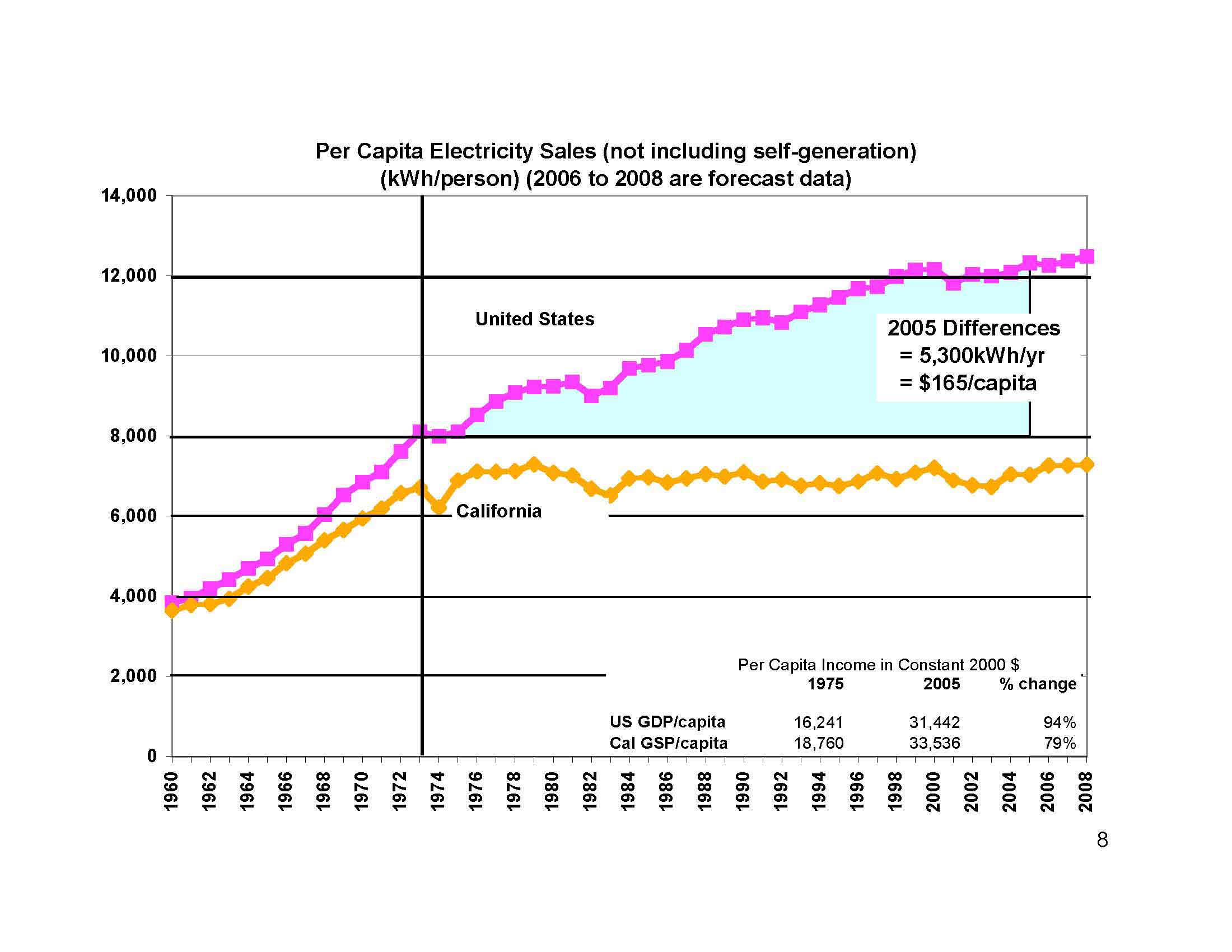The Future of Energy Efficiency and Demand Response is Embedded Technology
by Gary L Hunt
Congress recently debated whether to overturn the rule banning the incandescent light bulb. The bill did not get the 2/3 vote needed to advanced. Environmental advocates cheered this ‘enlightened action’ but failed to mention that more than a majority of members voted for the bill.
Does that mean the majority are rejecting energy efficiency?
The push for energy efficiency has been around at least since Jimmy Carter was president and there are true believers. It’s not that energy efficiency isn’t important—it is! It’s not that we don’t have opportunities to be more efficiency—we do! In the United States residences consume about 20% of all energy used and a lot of it is wasted.
Why we turn-off our energy efficiency enthusiasm:
- Energy Efficiency is a big hassle.
- Energy Efficiency savings are not worth that hassle for most customers.
- Energy Efficiency programs are intrusive and want to change our lifestyles.
While most utilities are required by regulators to be energy efficiency cheerleaders, they get paid when we use energy not when we save it. A few states, like California, have ‘decoupled rates’ shifting the rate of return utilities earn away from commodity energy sales and more toward achieving performance targets. This helps better align the interests of utilities and customers but it isn’t sufficient to get the energy efficiency potential available.
California is again a case in point. The big three California investor owned utilities recently filed their smart grid deployment performance reports with the California Public Utilities Commission. The reports suggest that utilities are mostly focused on demand response and have begun implementing peak day pricing to encourage customers to respond to high energy use periods. But energy efficiency and especially encouraging home area networks and other strategies to put all that smart meter technology to work to enable “self help” has been a big bust. Perhaps that explains why Google abandoned PowerMeter and Microsoft scrapped HOLM for lack of customer interest.
Back when Jerry Brown was Governor the first time in the 1970’s California adopted its first energy efficiency code. Today the result of that great experiment in energy efficiency is that California’s energy intensity is fully one-half the national average. Because of the size of the California market, appliance makers built better products just like automakers reduced emissions and the benefits spread beyond California’s borders.
Disruptive Technology is both the problem and solution for energy efficiency.
The California Energy Efficiency Code worked well for several decades until the disruptive technology of flat screen HD TV’s arrived on the scene. In a span of as little as five years, the rapid growth in the market penetration for HDTVs overwhelmed the energy efficiency savings to date. Those HDTVs used a lot more energy and they ate up the efficiency savings from all the laundry and kitchen appliance improvements for the last twenty years! Poof! Gone in the flash of a gazillion megapixels. So California amended its energy efficiency code to apply to HDTVs and the balance is being restored as new energy efficient HDTVs replace the first generation ones. We’ll buy them too because they are bigger, brighter, and cheaper—and we want them!
So what’s the lesson?
1. Embed Energy Efficiency Technology. If we want energy efficiency—and we do, we need to embed it in the technology we expect to use and make it part of the products we buy not something we must think about, decide up or do separately from living our lives.
2. Make it EASY! So why don’t we make use of home area networks? We know the answer– because it is not yet fast, easy, cheap or convenient. We don’t want more gadgets, we want better apps on the gadgets we already have and use. This is the lesson we learned when less than 20% of us bothered to learn how to program our old VCRs, or set our programmable thermostats, and why Microsoft finally set up Windows automatic updates—because doing this stuff is a big hassle.
3. Give Me Control and Don’t Try to change my Lifestyle. Most start-ups in this space are focused on building software, gadgets, dashboards and devices. Most will likely reach the same conclusion as Google’s PowerMeter and MSFT HOLM not because these are not good products, but because we don’t want them. We want simplified integrated solutions that give us control over our lifestyles. We don’t want big brother (utilities, government or big companies) tracking us, measuring us, alerting us or shaming us into saving energy. We don’t want more gadgets or devices. We don’t want our personal information stored in some ‘hackable’ cloud server. What is missing is that fine balance between embedded technology that helps me optimize my use based upon decisions I make that gives ME control over my lifestyle and the ability to change my mind.
Who’s on First Customers or Utilities?
Many of the start-ups and vendors in the energy efficiency and demand response space are focused on utilities not end-use customers. The energy and utility markets are still too fragmented to afford the scale needed for retail customer aggregation at this stage. Vendors see utilities as their customers buying EE and DR deliverables vendors get from aggregating commercial and industrial customers. So far this has worked OK for vendors focused like EnerNOC, Comverge and CPower, but theirs is a transitional game and continued growth means they must constantly expand into new markets.
The utilities are procrastinating until standards are adopted like the proposed Smart Energy Profile 2.0 HAN national standard, but that might take another five years. California’s big three investor owned utilities say they have pilot programs but the number of devices in active use is small. The risk for utilities is they are wasting their lead time while they still control the gateway to customers when they could be offering fast, easy, embedded technology solutions that would improve customer engagement, overcome angst about smart meter deployment changes in rates, and set the stage for a more distributed energy future for themselves and their customers. This will likely prove as big mistake.
The door is opening for more disruptive technology change ahead as smart meter saturation gives way to more and better ways to use the meter data insight to create new products and ‘wise up’ old ones. I predict a race ahead between the utility-centric vendors and the customer-centered vendors.
Utilities will wake up to the need to catch up after having wasted this lead-time and will scramble to offer their customers better solutions that enable use of smart meter data, energy efficiency and demand response services, and distributed generation options. Few are likely to succeed because they are not working NOW to engage customers, and organize them into a loyal social network that sees the utility has “on their side” in understanding and making effective use of smart grid enabled disruptive technologies.
Advantage will likely belong to new vendors who use social networking and customer aggregation to create the scale needed to make new disruptive technology driven solutions scalable and profitable. This is a marketing play not a device sale play. It is a segmentation play not a one size fits all solution. It is who do you trust not what do you have to sell me. For smart grid to succeed requires scale and the ability to cross artificial market boundaries. The consolidation process is already underway in each stage of the energy value chain.
Bigger players are emerging offering end to end solutions. New entrants using new applications of disruptive technology will surprise us as customers and will swamp the boat of procrastinating utilities and complacent gadget makers. All you have to do is imagine the disruptive technology power of an “Energy Groupon’ working with vendors to seduce us into playing the energy efficiency and demand response game for fun and profit. What profit? The kind utilities never offer us—winner of the biggest saver in the neighborhood award. A chance to enter the Hawaii vacation sweepstakes from among the neighborhood winners in my town. The competition between schools for a big prize for the most energy savings by households of students.
- Help us win and we will help you save energy. Let me track my progress on my Comcast home energy channel or change my settings on my iPhone app.
- Make it competitive and fun to save energy. Show me the competitive scores on EE by neighborhoods in my neighborhoods score compared to its savings potential for the current quarter’s Sweepstakes.
- Empower me to save energy with embedded technology. That embedded technology turned HDTV from scoundrels into energy efficiency champions while giving me bigger screen, brighter picture AND energy savings in one generation of technology, but it took the amendment to energy efficiency code to achieve it. If other states did nothing more than adopt the California Energy Efficiency Code or the new national standards based code, we could dramatically improve energy efficiency and intensity.
Creating the consumer demand for better products using less energy from disruptive new technologies that also lower costs—that is the big pay-off for all of us.
Related articles
National Demand Response Action Plan Message to Customers: You Win! (insightadvisor.wordpress.com)
Cost-saving claims add up to barefaced cheek (guardian.co.uk)
Smart Energy Data Frienemies (insightadvisor.wordpress.com)
Landlord insurance holders ‘need to be more energy efficient’ (premierlinedirect.co.uk)
Home Energy Auditor in Maryland Participates in Pepco’s Home Performance with Energy Star(R) Program (prweb.com)
EPA: New Energy Star Initiative Recognizes Cutting-Edge Products with Highest Energy Efficiency (bespacific.com)
Support For Energy Efficient Bulbs Dims Among GOP (npr.org)
Why Fighting Energy-Efficient Lightbulbs Is So Stupid (ecocentric.blogs.time.com)
About the author:
Gary L. Hunt has been a trusted advisor on energy and technology issues for more than thirty years. He served as CEO of a wholesale power producer in New England, ran utility systems in Austin, Texas and Oakland, California, and, for the past ten years, been a strategic consultant focused on energy markets, fundamentals, prices and risk. The views expressed here are his personal observations and insight and do not necessarily represent those of his employer, clients, colleagues or wife.
You can read his blog Insight Advisor at: http://insightadvisor.wordpress.com/


